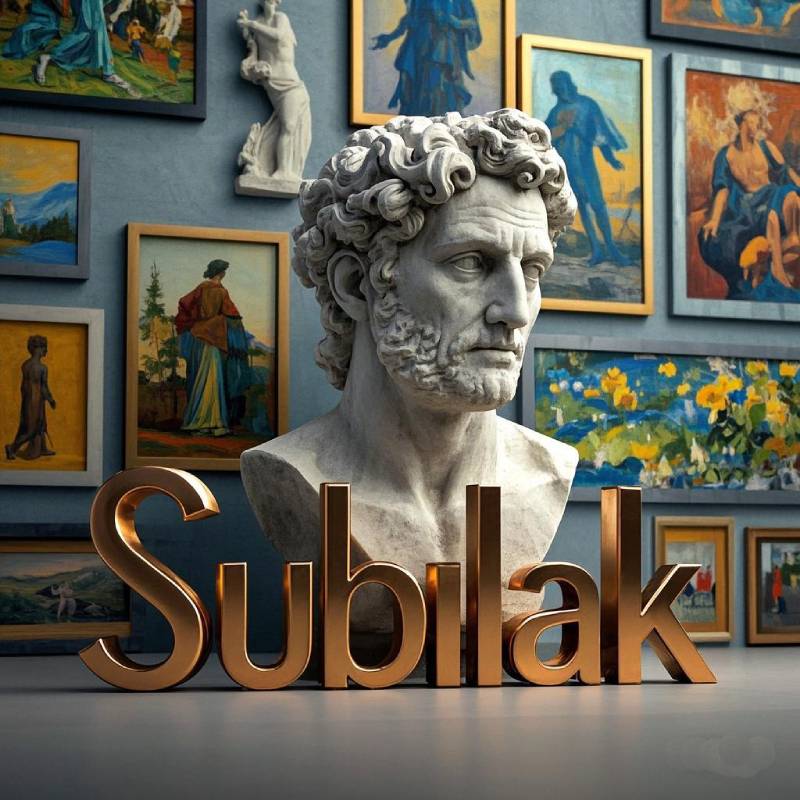
The statue of Athena (specifically Phidias’s “Parthenon Athena”, about 12 meters high and made of ivory and gold) is the pinnacle of classical art, and its aesthetic characteristics are highly compatible with the core principles of the Academisme, reflecting the artistic pursuit of reason, order and idealization. The following are analyzed from three dimensions: formal language, philosophical connotation and academic inheritance:
First, the exemplary nature of formal language
- The ultimate use of the Golden Section
Phidias constructs divinity through mathematical proportions:
- Slender body ratio of 1:8 (breaking the ratio of 1:7.5), strengthening the sense of nobility;
- The armor pattern is arranged with Fibonacci spirals, and the shield relief composition implies √2 rectangular divisions;
- The base tilts at 3° Angle to correct the upward perspective distortion and reflect the geometric rationality.
(The proportion system is still used in academic sketch teaching)
- Dynamic quiet aesthetics
- Contrapposto variant: the right knee is slightly bent to break the symmetry, but it is mechanically compensated by holding the spear with the left arm and the Statue of Victory with the right arm;
The pleat treatment is both functional and symbolic: the straight pleats of the chest armor and the wavy curves of the skirt form visual tension, heralding the beginnings of the Baroque dynamic pattern.
- Optical experiment of materials
Ivory splicing technology: The face uses 8 pieces of ivory seamless splicing, and the joints are embedded with silver rivets to prevent cracks;
Gold reflection control: the armor gold plate is arranged at 15° inclination Angle, so that the sun reflects along the temple axis to the altar;
The pupil is inlaid with lapis lazuli, creating a “staring” effect under candlelight, which directly influences Bernini’s religious sculpture.
Second, level coding of philosophical connotation
- Theological endorsement of Athenian democracy
The Battle of the Amazon on the inside of the shield symbolizes the conquest of civilization against barbarism (a reference to the Persian War);
Centaurs fighting Lapitians are carved into the soles, suggesting democratic repression of chaos;
The pedestal relief “The Birth of Pandora” has been interpreted as a political metaphor that “order comes from chaos”. - Materialized presentation of Plato’s ideas
The face combines the characteristics of Athenian girls (such as narrow forehead and pointed chin) with abstract geometric forms (such as spherical eye socket and conical nose bridge), which implements the philosophy of “beauty is reason form” in the Republic;
The statue of Niki (Goddess of Victory) is about 2 meters high, but weighs only 30 kilograms, through hollow casting to achieve “light victory”, a metaphor for wisdom over brute force. - The complex narrative of gender politics
Deliberately weaken the curve of the breast, but through the body armor to highlight the outline of the chest muscle, to create “genderless power”;
The serpentine Aegis shield implied fertility worship (the shedding of the snake’s skin symbolizing new birth) and stole the maternal divinity in patriarchal discourse.
Third, the theoretical reconstruction of the academy
- Ingres’s line worship
The posture of the gods in Homer’s Praise directly copies the rhythm of the pleats of Athena;
A lecture in 1841 stated: “The curves of Phidias’ skirts are closer to the truth than mathematical equations.” - Bouguereau’s secular translation
In “Youth” and other works, the neutral beauty of Athena is transformed into the “pure beauty” of bourgeois girls, retaining 1:8 head and body ratio but softening muscle lines. - The influence of archaeological positivism
Jacques-louis David reconstructed the armor pattern of Athena in The Sabine Women, and verified the classical proportions using data obtained from measurements of the Elgin stone sculptures by the French Academy. - Review critically
- The Myth of white marble
Modern spectral analysis confirms that the statue was painted with vermillion, ultramarine and other strong colors, and the “pure white classical” advocated by the academy is actually a misinterpretation of the Renaissance construction. - The dilemma of colonial aesthetics
The act of Earl Elgin cutting and carting away 52 Athena reliefs was rationalized by 19th century academics as a “preserved civilization”, exposing the complicity of classicism and colonialism. - Digital disenchantment
- 3D scanning reveals a defect of 15° introversion in the right shoulder of the statue, subverting the myth of “absolute perfection” and proving that ancient artists also made perceptual adjustments.
Conclusion: The dialectics of solidification
In the view of the academy, the idol of Athena is not only the object of measurement and imitation, but also the tool of constructing the subjectivity of Western art. The material of ivory and gold is a metaphor for the duality of art – the pursuit of the eternal light of reason (gold), but also the dependence on mortal physical experience (ivory). This paradox is still being asked: when we gaze at Athena in a museum, do we see the glory of ancient Greece, or a mirror vision of modernity?

